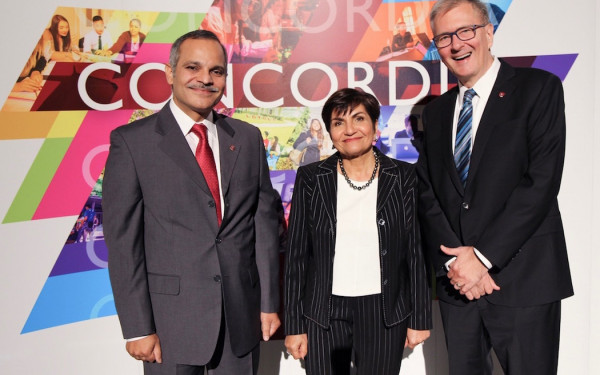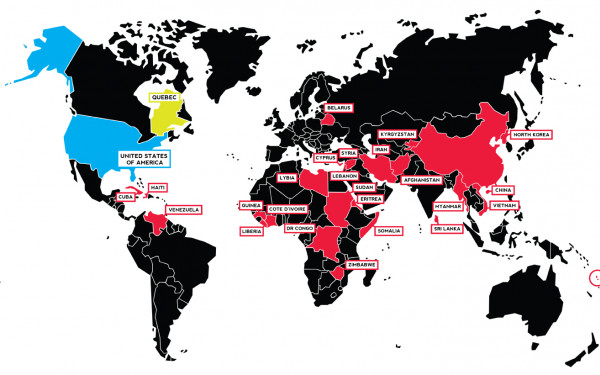Now Boarding: Aerospace Engineers
Concordia Hiring Profs For New Bachelor’s in Aerospace Engineering
Flying and space: aerospace
It’s a popular theme for undergraduate engineers at Concordia, given that students built Mars rovers, autonomous drones, satellite control systems and miniature helicopters for their final projects last year.
Next year, thanks to the new aerospace engineering bachelor’s degree, engineering students in the program will get to design a plane. Naturally, interest in enrollment is high.
“We have more than 100 students interested per [year],” says aerospace program director Marius Paraschivoiu—only 50 spots are available per year.
Aerospace engineering opens up much more depth of study than before for bachelor’s students, who were previously limited to the one aerospace specialization in mechanical engineering.
Now, aerospace engineering offers three specializations: aerodynamics and propulsion, aerospace structures and materials, as well as avionics and aerospace systems.
Aerodynamics and propulsion deals with the parts that fly, and aerospace structures and materials deals with the construction of the planes and spacecrafts themselves. Meanwhile, avionics and aerospace systems teach about the electronics inside planes and spacecraft.
Paraschivoiu says that the old mechanical engineering specialization will continue to exist—like a pressure valve to let off the high demand for the pure aerospace degree.
“Our plan is not to increase [the size] year-by-year,” he says. “The plan is to make it a strong cohort.” That means 50 students per year, every year.
To that effect, application is tough. Students transferring to aerospace engineering need a GPA of 3.8 or more—to be accepted in mechanical engineering, students need a 2.5 GPA. To get in from CEGEP, students need a CRC score of 30 or higher—mechanical asks for 25. And to get in from high school, applicants would need an average of 90 per cent—mechanical asks for 80.
Paraschivoiu adds that they’re hiring six new professors. “We have a good group of professors,” he says. “We have a good base that we’re now going to try and augment.”
NSERC money here
Coming to fruition with the new program is a grant from the Natural Sciences and Engineering Research Council of Canada to establish a new research chair at Concordia in Aerospace Design Engineering—or NCADE—that will help guide the direction of the new program.
The $1 million NSERC grant is joined by contributions from Bombardier Aerospace, Bell Helicopter, Pratt & Whitney Canada, Marinvent and Altair Engineering, bringing the total to $4.4 million over five years.
“It’s an NSERC chair, but it’s not research-focused,” says Catherine Marsden, the new chair. “It’s focused on undergraduate teaching.” She says the purpose is to enhance how aerospace design is taught, beyond simply understanding systems.
While NCADE and the new aerospace degree complement each other, they are distinct entities. NSERC funding is applied only to NCADE, says Marsden—not the aerospace degree at large.
The approval processes for the degree and chair coincided, but are distinct. NSERC is a federal organization, and the aerospace program was provincially approved.
“They have obvious synergies,” Marsden says. “To have both of them is amazing. But the NCADE program was awarded to us by NSERC without the aerospace degree in place. Of course when we applied for the NCADE program, the fact that we had applied to offer an aerospace degree was key to that application.”
However, Marsden says that the application for an aerospace program wasn’t make-or-break in NSERC decision, as there was already an aerospace option in mechanical engineering—not to mention the Concordia Institute of Aerospace Design and Innovation, or Concordia President Alan Shepard’s board membership in Aéro Montréal.
“Designing an airplane, it’s not good enough to just know about structures, or engines, or aerodynamics,” Marsden says. NCADE gives students the chance to learn in a cross-disciplinary environment.
“There’s all kind of specialties, and we teach them all,” Marsden says, “but one thing we don’t do is teach designers. [NCADE]’s contributions to the aerospace degree are on the design side.”
She says that students who want to pursue design—how to think about putting together a whole project, as opposed to focusing on, for example, an engine—should be able to.
“There’s a feeling that it’s not a smart thing to do, to put all your eggs in one basket at the undergraduate level,” Marsden says, referring to students’ reluctance to focus exclusively on aerospace, “but I tend to disagree.”
The aeronaut’s apprentice
“One of the key things that we have launched is an apprenticeship program,” Marsden says.
Apprenticeships are like internships—students go out to a company to do work and find mentorship. The difference, Marsden says, is that apprenticeships span over four years.
“[A student] is mentored by one company, from year one, and that company takes on part of their training every summer, for the entire four years of their degree.”
She sees students working on the shop floor, in product support, in marketing, in inspections, flight tests, all different aspects of building a product. According to her, after four years students will have their engineering knowledge, plus the knowledge of the people and processes to let them enter the design side of aerospace.
“That’s what’s missing right now,” she says. “The opportunity for them to go work as design engineers.”
The first students will go out this summer—selection happens in the next two or three weeks, according to Marsden.
“This is unique to the NCADE program,” she says. “It’s a pilot project, but I think it’s going to be very successful.”
And while her chair is specific to aerospace, Marsden sees the apprenticeship spreading across disciplines—engineering or otherwise.
“The aerospace degree shouldn’t be just producing designers,” Marsden says. “There should be people that want to be specialists, academics, all kinds of things. But I just want there to be a space there for people who want to be designers.”

_900_600_90.jpg)
_600_832_s.png)

1_600_375_90_s_c1.jpg)

_600_375_90_s_c1.jpg)
